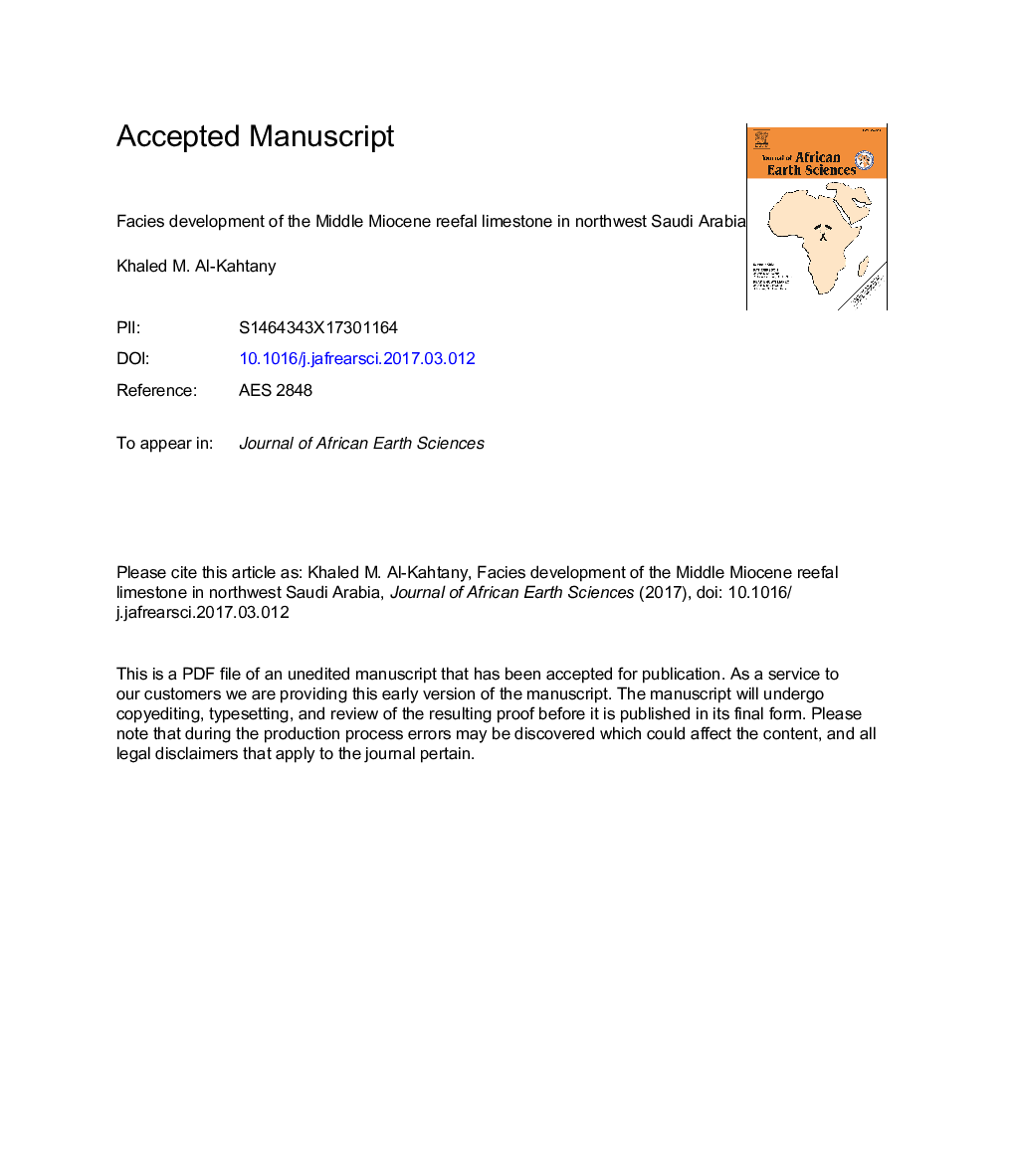| Article ID | Journal | Published Year | Pages | File Type |
|---|---|---|---|---|
| 5785467 | Journal of African Earth Sciences | 2017 | 22 Pages |
Abstract
The Middle Miocene reefal limestone of Wadi Waqb Member (Jabal Kibrit Formation) in northwest Saudi Arabia is unconformably overlaying the Precambrian basement rocks and/or Early Miocene siliciclastics. On the basis of field observations, microfacies analyses and fossil content, particularly scleractinian corals, the reefal limestone is composed of three depositional facies. These depositional facies are from base to top: 1) fore-reef facies, consists of hard, massive, marly coralline limestone with low diverse, small isolated corals heads, 2) reef-core facies, which consists of very hard, bioturbated coralline limestone with exclusively huge coral colonies of Porites and Tarbellastraea spp. and, 3) back reef facies, consists of sandy to pebbly massive, bioturbated limestone with very low diverse, scattered, small dendroid and massive heads of corals. The studied reefal limestone was deposited in fore-reef framework in an open marine environment with moderate to high energy conditions and changed upward to shallow marine facies with accumulation of skeletal grains by storms during regression.
Keywords
Related Topics
Physical Sciences and Engineering
Earth and Planetary Sciences
Geology
Authors
Khaled M. Al-Kahtany,
